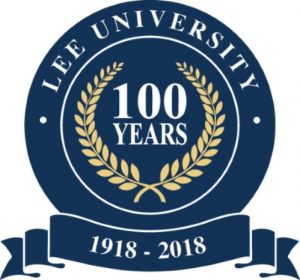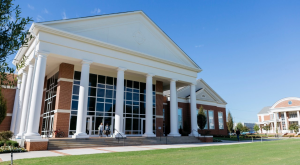Lee University at 100: 1993 – 2018
In recognition of the 100th birthday of Lee University this year, Faith News has presented a series of four articles on the history of the Church of God’s premier educational institution. This final in the series recalls the years 1993-2018. The article is an original composition by Dr. Carolyn Dirksen. Dr. Dirksen was hired to teach at Lee College in 1968 and this year completes her 50th year as a member of the faculty. She has served as a department chair, vice president for academics, and will officially retire later this year.
To access the first installment of the series, click here: www.faithnews.cc/?p=26244
To access the second installment of the series, click here: www.faithnews.cc/?p=26315
To access the third installment of the series, click here: https://www.faithnews.cc/?p=26396
* * *
 In 1993, at the 75-year mark, Lee was poised for significant change. Paul Conn was in the eighth year of his presidency, and it was evident that his energy and vision were taking Lee to a place never before envisioned. The devastating Ellis Hall fire in November 1993 had given rise to a new surge of determination, and the new Atkins-Ellis Hall opened in fall 1994. More than just another dormitory, it was an embodiment of Genesis 50:20, “You intended to harm me, but God intended it all for good.” Enrollment topped 2,000 for the first time, and records were broken with each new class, increasing the student population by more than 10% per year. Lee had just successfully completed a review by the Southern Association of Colleges and Schools, and the foundation in place for the next round of academic expansion.
In 1993, at the 75-year mark, Lee was poised for significant change. Paul Conn was in the eighth year of his presidency, and it was evident that his energy and vision were taking Lee to a place never before envisioned. The devastating Ellis Hall fire in November 1993 had given rise to a new surge of determination, and the new Atkins-Ellis Hall opened in fall 1994. More than just another dormitory, it was an embodiment of Genesis 50:20, “You intended to harm me, but God intended it all for good.” Enrollment topped 2,000 for the first time, and records were broken with each new class, increasing the student population by more than 10% per year. Lee had just successfully completed a review by the Southern Association of Colleges and Schools, and the foundation in place for the next round of academic expansion.
From that launching pad, Lee took off for 25 years of unimaginable growth and development, and at the century mark, the momentum has not slowed. To keep pace with rapidly increasing enrollment, Lee dedicated three new dormitories in the next three years along with the Curtsinger Music Building and the Deacon Jones Dining Hall. Recruitment accelerated with the addition of “Voices of Lee,” a premier acapella vocal group, and “Kingdom Players,” a theatrical recruitment troupe. To care for the influx of new students, the Office of First-Year Programs, launched in 1996, created an award-winning strategy.
As students flooded in, the academic sector created meaningful new programs, and the mid-1990s saw some dramatic curricular changes. In 1995, the first graduate program, a Masters in Church Music, opened the way for the development of programs across the disciplines. The faculty also approved a new general education core that included a required cross-cultural experience, taking most Lee students outside the US to develop a more global perspective. Core courses across the curriculum were updated to meet the changing needs of the student body.
Behind the scenes in 1996-97, college administrators worked feverishly to prepare for a huge transition. The eight academic departments were clustered into four colleges and schools; administrative offices were shuffled, and approval processes were realigned. Deans were selected; new stationary was printed, and new signs, banners, and marketing materials were created. Finally, after months of preparation, On May 10, 1997, Lee College became Lee University. On that day, all the signs on campus were switched; a new catalog was published, all campus uniforms were changed, and Lee emerged into its new identity. It is hard to describe the heady atmosphere of those years when God’s blessing was so immediately visible.
In 1998, enrollment topped 3,000, increasing by 1,000 students in just four years. Rapid campus development kept pace with these unprecedented enrollment gains, and over the next three years, Lee dedicated the Helen DeVos College of Education, Keeble and Storms Halls, and the Paul Conn Student Union. Lee entered the new millennium as a developing university with nationally recognized programs and an increasingly beautiful and functional campus. A world-class faculty had been drawn to Lee by its mission and by the energy, optimism, and faith that permeated the campus culture. By the end of this era, the percentage of faculty with doctorates had increased from 40% to 80%.
Lee added a Grants Office in 1997 and within the next ten years, $10 million in grant funds flooded the campus. In 2003, Lee added its signature program in service learning with a grant from the Lazarus Foundation. Every student completes 80 hours of service, learning how to use academic skills to serve humanity. During the same time-period, Lee received a $2 million grant from the Lilly Foundation for the Theological Exploration of Vocation, making discussions of God’s calling a central part of the Lee ethos. A $1.8 million Department of Education Title III grant provided funding for technology upgrades, assisted with the development of a campus-wide emphasis on critical thinking and funded the Center for Teaching Excellence.
During the early 2000s, Lee continued to add significant academic space that ultimately transformed the campus. The Humanities Center became a hub of activity on the north campus as the School of Religion drew students to the south. In addition to new space, Lee acquired the old Mayfield Elementary School and converted it into a small village of programs including the Center for Teaching Excellence, the art major, the family therapy clinic, the archaeology lab, and the intramurals gym. Lee also acquired the extensive First Baptist Church property, opening the way for significant expansion to the south. In 2009 construction began on the Science and Math Complex (SMC), almost three times the size of the Beach Science Building it replaced. The number of students majoring in the STEM disciplines has doubled since the new facility opened. One of the most distinctive buildings on the campus, dedicated in 2011, is the chapel. A natural stone structure with an imposing steeple, the chapel seats 350 and includes the Nichols Room and Courtyard. This magnificent structure houses Lee’s liturgical worship services, music and academic events, and it is a favorite wedding venue for Lee students and alumni.

The new Lee University School of Business is the latest major building added to the Lee campus in an aggressive expansion that has taken place over the last 25 years. To the right is the Communication Arts Building (click photo to enlarge)
The addition of the new SMC made it possible to consider adding nursing programs, so the long march toward approval began. In 2013 the Tennessee State Board of Nursing gave the first level of approval, and Lee hired a director, enrolling the first class the next year. In 2016 the state-of-the-art School of Nursing building opened, and the first class of nurses graduated in 2017. The SON building created one side of a quad that took the Lee campus to downtown Cleveland for the first time. In addition to the School of Nursing, the South Quad includes a new Communication complex on Ocoee St, and the School of Business located in the dramatically renovated Baptist Church education building. The former First Baptist sanctuary is now Pangle Hall, a School of Music recital venue. A lacrosse field, and the Forum, a multi-purpose tower built for the centennial year, completes the dramatic South Quad. Nearby, Dirksen Hall was opened in Fall 2017.
In the final 25 years of its first century, Lee expanded from a 2,000 student undergraduate college to a 5,300 student university with flourishing programs and an enviable campus. Since 1994, Lee has added 10 residence halls and 6 state-of-the art academic buildings for an additional 400,000 square feet of classroom space. Yet, despite all the dramatic changes and explosive growth, Lee at heart is still much the same place as it was when Nora Chambers welcomed the first 12 students. The center of all Lee’s work is still a deep love for the things of God and a deep longing to share that with students. Like Nora Chambers, Lee faculty welcome the unseen guest into every class meeting and dream of sending graduates out to make the world a better, more just and more merciful place.




